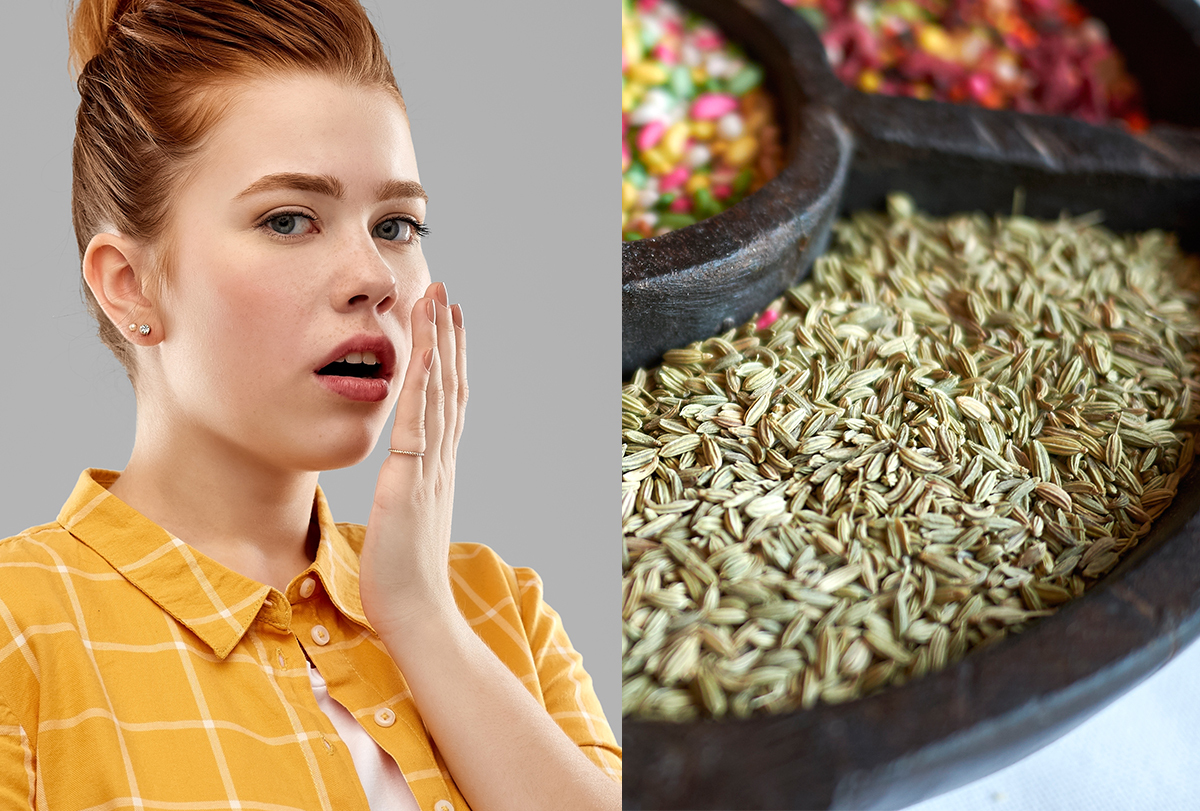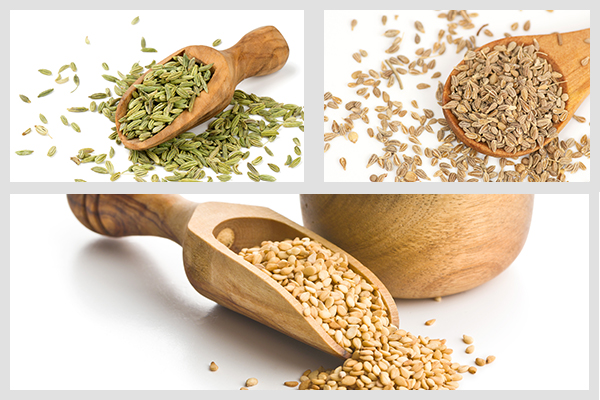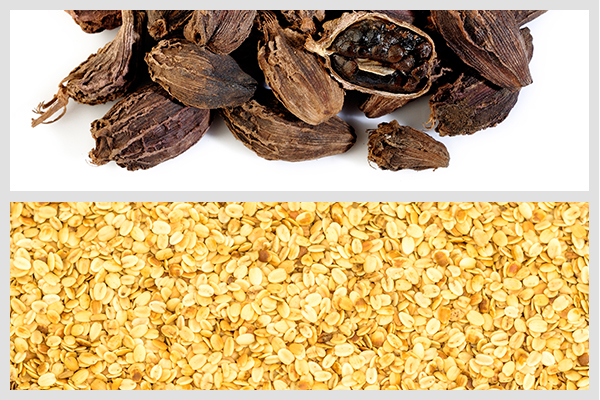In this article:
If you visit any Indian or Pakistani restaurant, you will often find their customers ending their meal with a mix of whole spices such as candy-coated fennel seeds, small pieces of rock sugar, or something similar.

This mixture can contain a variety of different ingredients that not only freshen breath but also aid digestion and is called mukhwas. (1)
What is it about the ingredients in mukhwas that makes them so special? Read on to know more.
Ingredients to Make Your Own Mouth Freshener
Here’s what you need to make your own DIY mouth freshener at home.
1. Fennel
Fennel seeds, or saunf, is the most popular mukhwas ingredient. You don’t even have to combine it with other ingredients; you can simply chew a teaspoon full of these seeds to remove any bad smell from the mouth.
The good news is that fennel also has antimicrobial activity and protects the teeth and gums from caries-causing bacteria. This effect is attributed to its ability to increase saliva’s pH. (2)
Fennel seeds and fennel tea are also often used to relieve digestive distress such as indigestion, gas, bloating, and stomach cramps. They contain several bioactive polyphenols that make them a powerful antioxidant, a mild pain killer, and to some extent a remedy to reduce fever. (3)
Fennel seeds possess a slightly sweet taste and are highly preferred as a mouth freshener.
2. Aniseed
Aniseed is a close cousin to fennel seeds, though it has a sharp spicy taste that may not be pleasant for some. Also called ajwain in the Indian subcontinent, aniseed contains strong antimicrobial properties and can effectively reduce disease-causing bacteria in the mouth. (4)
In a study of children aged 3–5 years, aniseed oil (along with oregano oil) showed high antibacterial activity and was effective in reducing dental plaques. (4)
Aniseed, just like fennel, also relieves digestive distress and gas. It is used to treat mild stomach cramps due to bloating and can improve digestion.
Many breastfeeding women also consume aniseed to increase their milk production. (5)

3. Sesame seeds
Sesame seeds are an easily available ingredient and are studied for their ability to eliminate odor from the mouth as well as protect against loss of tooth minerals due to plaques and dental caries. (6)
Though sesame seeds are not particularly beneficial for digestion, they possess nutrients that have health-benefiting properties.
A recent study has identified sesame seeds to have anti-aging, anti-inflammatory, liver-protective, antioxidant, antimicrobial, and anticancer activities. (7)
4. Black cardamom
Black cardamom is slightly larger than the more commonly used green cardamom. Its seeds can be removed from the shell and used in preparing mukhwas.
Both black cardamom and green cardamom are useful in reducing mouth odor and the growth of bacteria that cause inflammation of the gums. (8)
Black cardamom is also used in the Indian subcontinent to aid digestion and relieve acidity and heartburn. Animal studies have also identified black cardamom to be effective in reducing fat storage and protecting the liver against damage by free radicals. (9)

5. Roasted coriander seeds
Roasted coriander seeds are not to be confused with whole coriander. These seeds are flat and have a salty taste.
Roasted seeds are chewed to relieve mouth ulcers. They also relieve indigestion, gas, bloating, diarrhea, and mild stomach cramps. (10)
How to Make a Mouth Freshener
- Combine 2 tablespoons of fennel seeds, ¾ tablespoon of aniseed, 1 tablespoon of roasted sesame seeds, seeds from 4–5 black cardamoms, and 1 tablespoon of roasted coriander seeds.
- Store the mixture in an airtight jar.
- Consume 2 teaspoons after each meal.
Expert Recommendation
To make the mouth freshener palatable and tasty, add a few cubes of rock sugar to the mix. You can also combine 2 teaspoons of mouth freshener with 1 teaspoon of rose petal paste (gulkand) for added flavor and fresher breath.
Most-Asked Questions
Can I consume this mix to lose weight?
A small amount of mukhwas will not bring about any significant weight loss. You will need to restrict calories and exercise to achieve weight loss.
How much mukhwas can I consume in a day?
Do not consume more than 1 tablespoon a day as these ingredients contain bioactive oils and insoluble fiber than can cause stomach cramping and diarrhea.
Can I use candy-coated fennel instead of plain fennel?
Yes, but only replace half of the fennel amount with candy-coated fennel to limit the amount of added sugar in the diet.
Final Word
Mukhwas is commonly consumed at the end of meals in the Indian subcontinent as a mouth freshener. It is prepared by mixing spices that are known to remove odor from the mouth and aid digestion.
You can easily prepare your own mouth freshener at home to be consumed after main meals.
- Was this article helpful?
- YES, THANKS!NOT REALLY


